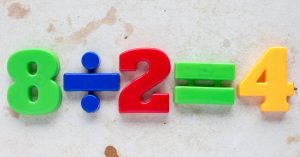3 Ways To Help Kids With Processing Disorders Learn Math
Some minds digest knowledge in unique ways and with a bit more time. Processing deficits exist in many people, some more noticeable than others. It could be the person who has a hard time remembering names. Perhaps it’s that a child sits in a desk contemplating directions and looking lost. In fact, it’s highly likely it’s the young one who strives to recall some of the basics of addition. How are parents and teachers supposed to facilitate this kid’s education? Techniques are out there. It still takes time and patience, but there are ways to make studying a bit easier. Try one of the following three methods.
- Create Small, Routine Practice Time
Students with a learning disorder often have a hard time remembering and grasping concepts. They can’t handle long sessions. Therefore, it’s a good thing to divide your effort into brief intervals with rests in between. Take, for example, memorizing addition facts. Thirty minutes of flash cards is not only hard, but it’s also boring. Think 10 to 15 minutes at a time with a very clear, specific focus. Start with the ones. Teach them, and repeat it. Don’t move on until it’s mastered. This could take weeks depending on the child’s ability, patience and effort.
- Invest in Tactile Learning
Often, physical movement aids in the mind’s retention, so teachers and parents should look for alternative methods. After all, these students are bright; they simply think differently. They’ll require lessons and reviews that match their modalities. Look into things that require hand gestures. For example a manufacturer of educational manipulatives would offer blocks and stones, useful in counting games. Not only do the pupils see the addition or subtraction occurring (a very tangible rather than abstract concept), but the ability to pick up and shift the items allows the brain to retrieve new information. It’s a good trick that doesn’t seem agitating.
- Break Into Small Chunks
Concentrate on little pieces of knowledge at a time. Then, build on that foundation. Does the student understand tens versus ones? If so, then begin to add double-digits with various methods. This division of concept releases stress and puts the focus on comprehension rather than teaching. It’s better to know five things very well than to kind of get 20 ideas.
As the instructor, you might feel overwhelmed at times. Your student possibly feels this too. It’s not about getting everything immediately. It’s about getting it eventually. Go slow. Be thorough.






